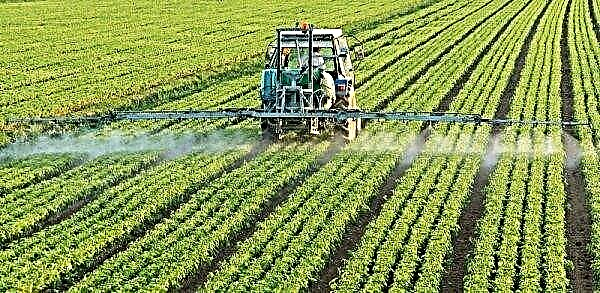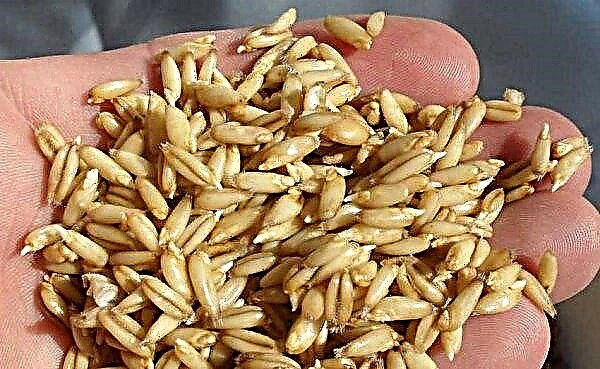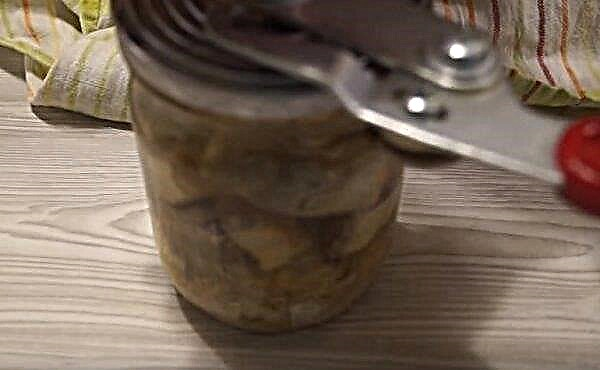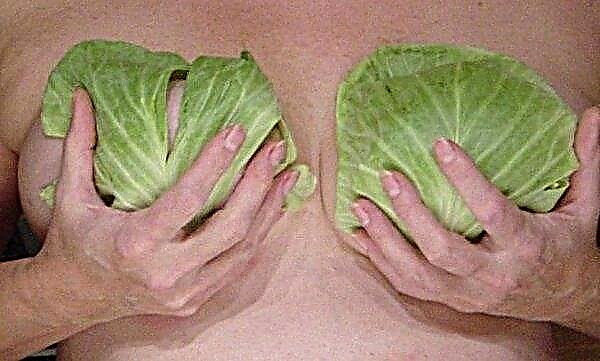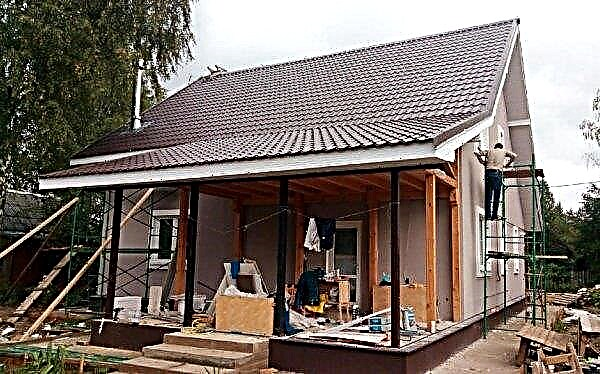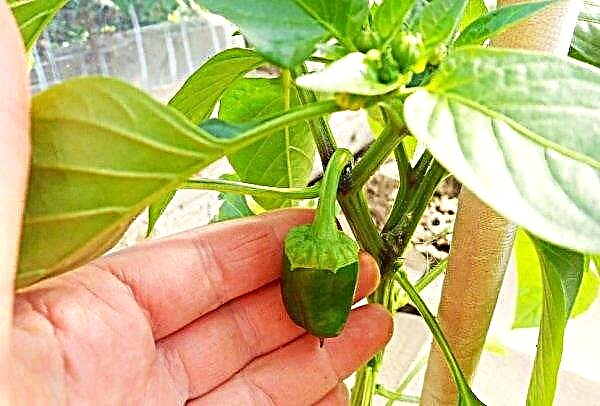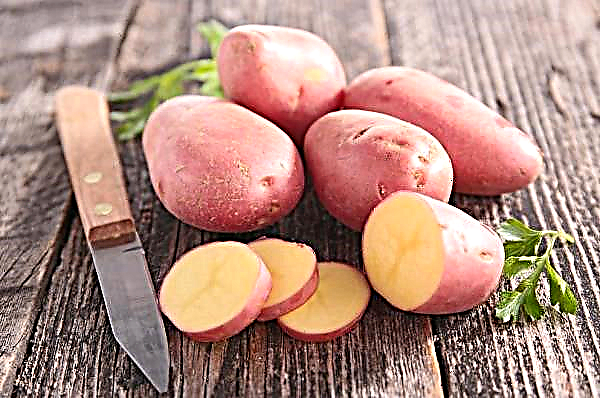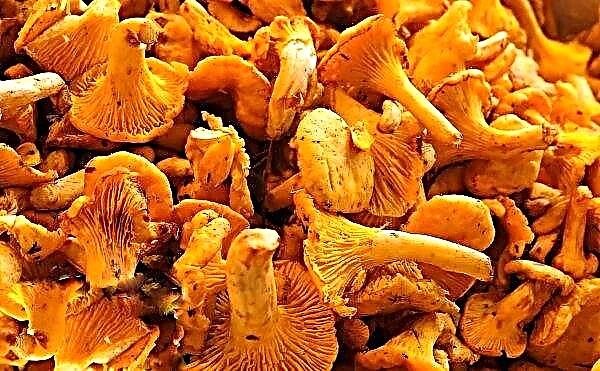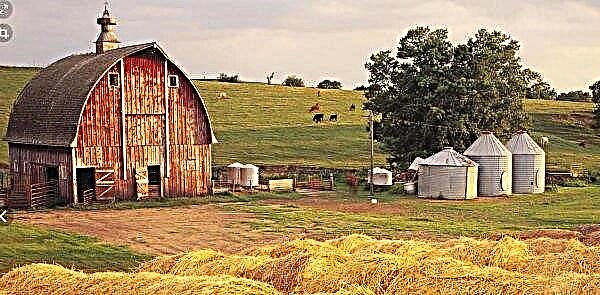The cultivation of various garden crops provides for various procedures for caring for them, so it is not surprising that in the case of carrots, you will also have to pay due attention to watering, top dressing and thinning of stands. In the case under consideration, this is one of the main requirements for obtaining an abundant and high-quality root crop. When to perform such actions and how to thin out the culture correctly - read on.
What is this procedure for?
Most often, carrots are sown arbitrarily, that is, the uncontrolled distribution of planting material in pre-arranged furrows. As a result of these actions, young sprouts will appear in a disordered forest: while in one part of the garden there are only a few, in the other a whole series of closely spaced specimens can form. The main reason for this is the poor germination of carrot seeds, and it does not matter which particular variety you give an advantage to.
Did you know? The largest carrot in the Guinness Book of Records reached a weight of 10.18 kg, and it was grown by American farmer Christopher Qually.
In addition, the density of the emerged plantings is affected by the level of deepening of seeds and the regularity of loosening of the upper soil layer with further care. It turns out that at one time stronger seedlings sprout, and after a while the specimens catch up with them weaker. Of course, the latter will not be able to give a good harvest and will only thicken the planting. To prevent this, and strong sprouts had enough space for full growth and root formation, weak plants should be removed as carrots grow. In addition, in excessively thickened plantings, the likelihood of developing fungal ailments or the appearance of pests is high, which is another reason for the need for a thinning procedure. If you do not remove the extra seedlings, it is impossible to exclude the likelihood of the appearance of deformed and diseased fruits.
To prevent this, and strong sprouts had enough space for full growth and root formation, weak plants should be removed as carrots grow. In addition, in excessively thickened plantings, the likelihood of developing fungal ailments or the appearance of pests is high, which is another reason for the need for a thinning procedure. If you do not remove the extra seedlings, it is impossible to exclude the likelihood of the appearance of deformed and diseased fruits.
When and in what terms it is necessary to thin out carrot seedlings
Over the entire period of growth and development of carrots, it is thinned no more than two times, so as not to disturb the root system of other seedlings unnecessarily. The first time the procedure is performed after the appearance of two true leaves on the seedlings, when it is already clearly visible where the planting density is normal and where it is too thick.
Usually this time falls on 5–6 weeks after sowing the seeds into the ground, and the main task in this case is to leave 2–3 cm free space between adjacent plants. The second time the seedlings are thinned out 3-4 weeks after the previous procedure, as soon as 4-6 full leaves will appear on the plants (usually this time falls on June or July).
How to thin out carrots
There is nothing complicated in thinning out the culture, and all you need is a watering can with water and gloves so as not to get your hands dirty. If we are talking about the first procedure, then large tweezers, which make it much easier to capture small plants, will help to simplify the task. Also, do not forget about the individual characteristics of each process, based on the size of the seedlings and its age.
First thinning
At the first thinning between adjacent plants, you need to leave a distance half as much as that provided by the selected planting scheme. First of all, weak, dead or dried specimens are removed, and if this is not enough, then you can pull out the medium-developed seedlings from the soil.
Important! Immediately after thinning the seedlings, it is necessary to moisten the soil again and compact it in the root zone of each sprout.
You can perform the procedure and not damage the root system of neighboring sprouts by pre-moistening the soil with a drop method: by pouring carrot sprouts from a watering can with a nozzle, you will prevent them from being washed out of the soil under the influence of a strong stream of water.
Second thinning
Re-thinning of the stands is usually done a month after the previous removal of the extra seedlings. However, if the carrots in the garden have grown rapidly, and individual sprouts are already hampering the development of neighbors, then you can reduce the interval to 15 days. During this time, a fairly large number of leaves appear on the carrots, shading each other, therefore, removing extra sprouts, you can leave no more than 10 cm of free space between seedlings.
In the future, this will improve the formation of root crops. The advantage of a later second thinning of the stands is the possibility of using root crops extracted from the ground: if not for their own needs, then for livestock feed.
Important! Pulling carrots out of the garden, grab aboveground greenery at the very base, so as not to create unnecessary vibrations in the soil by repeated action. With the close proximity of carrots, damage to the root system of neighboring plants is possible, which negatively affects their nutrition.
It is likely that until the time of harvest you will have to perform this procedure again (if individual specimens noticeably interfere with each other), but you should not leave an excessive distance between neighboring vegetables: a large amount of free space often leads to increased growth of root crops to the detriment of their taste .
Follow-up care
Immediately after thinning, the remaining plants should be well watered, the substrate around them densified and spudged. The upper part of the root crop should not look outward, which will avoid greening the shoulders and the appearance of burns in these places (carrots should be at least 5 cm below the ground). If necessary, immediately remove some green leaves, especially if the tops have grown too much.
In the future, standard actions are taken to care for the crop, providing for timely hydration of the substrate (the earth should not dry out or crack), periodic feeding and additional hilling of plants after the next loosening.
Did you know? With the regular use of large quantities of carrots, you can slightly change the skin color to yellowish, due to the effect of carotene contained in it. This feature of the root crop is used by employees of the zoo, maintaining with it the color of the plumage of the flamingo.
The role of the irrigation liquid is perfectly suited for the sun-heated and standing water, and complex fertilizers (for example, “Agricola”) can be used as fertilizers, combining their application with the next watering. As for nitrogen-containing mixtures and organic fertilizers, you can use them only at the initial stages of the plant’s vegetation, and as soon as the carrots have grown enough green mass, it is advisable to replace them with superphosphate (1 tablespoon per 1 m²), the same amount of potassium chloride and tea urea spoon.
Useful Tips
In addition to information on thinning carrots, it is important to consider some additional recommendations regarding this procedure.
The main ones include the following:
- the best time to remove excess plants is early morningwhen the carrot fly has not yet had time to fly to the garden (if plants are damaged, a large number of pests flies to the emerged juice, which is extremely undesirable for planting);
- after removing excess vegetation, the soil at the place of growth must be densely tampedso that pests do not get inside, and the earth does not dry at the root system of the remaining plants;
- root crops of seized carrots can be fed to livestock, but it is advisable to immediately throw the tops into a compost heap and fill it with sawdust or earth, which will help to kill a strong carrot flavor;
- when watering the beds, do not forget to put a spray nozzle on the watering canso that the stream of water is evenly distributed over the area of plantings and does not leach seeds from the soil.
Only observing all the requirements for the thinning process and promptly removing excess vegetation from the beds will it be possible to grow a strong and plentiful crop of carrots, without the slightest sign of the development of diseases or pest activity.

